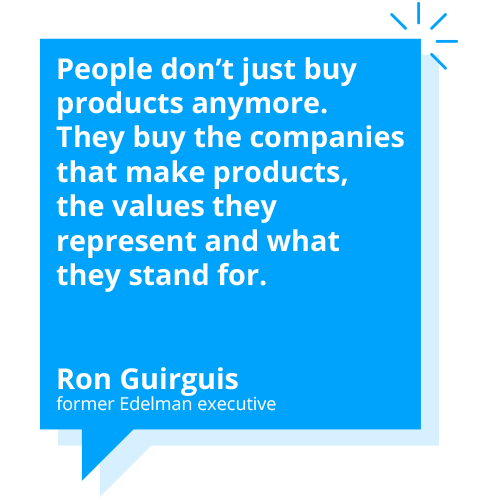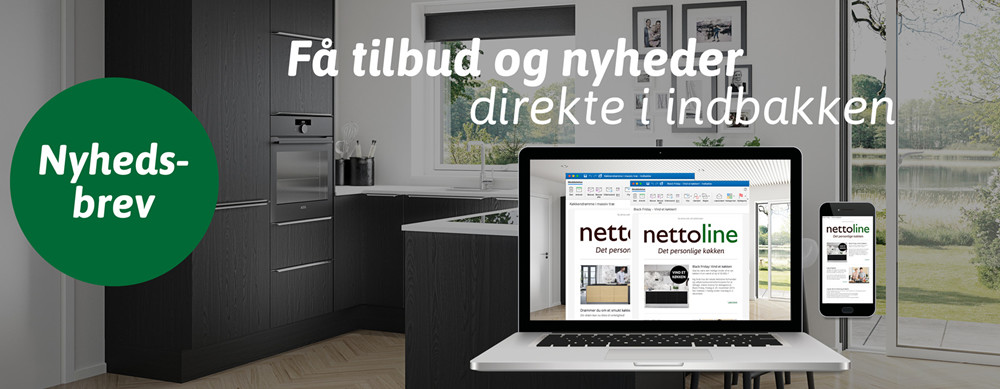Why Internal Communication in Retail Is Hard but Oh-So Important

Internal communications is important no matter what business you’re in. But retail communication is especially important. Retail is an industry in which the way you communicate with your employees is directly reflected on their interactions with your customers.
One real-world example: Marie

Marie is a part-time employee and mainly works evenings and weekends. She’s busy with her family life and doesn’t think much about her job in her free time.
One Friday, she arrives at work to start her shift and a customer asks if the summer sale has begun, and if so, where she can find the products included.
Marie unfortunately has no idea.
This is not an uncommon problem in retail, and it can have two results, both of which are highly undesirable. First, Marie will be annoyed with management or her coworkers for not telling her what she needs to do her job. Second, the customer will be unsatisfied and likely get the impression that the staff lacks training and professionalism.
The worst case scenario is that you lose both your customer and your employee.
Internal retail communication directly impacts your customers
Communication in large corporate structures typically travels top-down. Information is shared with each individual country, region, and store — mostly via email — landing on a store manager’s desktop computer.
However, it’s rare that every store employee is present at the same time or has access to a desktop computer. That makes it hard for the manager to effectively distribute information. Instead, it’s spread via the break room bulletin board, between shifts, or through the grapevine. This causes delays and fake news, leaving people like Maria completely out of the loop.
In retail, ill-trained and ill-informed staff have a direct, negative effect on the customer experience. In today’s competitive market, one bad experience is all a customer needs to decide to go somewhere else.
This effect is even more harmful in large companies with great diversity and a global presence. Different languages, time-zones, and hierarchies make spreading information even more difficult and complicated.
Broken brand promises result in lost customers
Brand promises are a powerful thing. In a competitive and oversaturated business environment, companies must rely on the strength of their brands and the promises they present, embodied by their people and translated through its products, services, and actions.
In every industry, consumers face overwhelming choices, yet a well-executed and consistent brand promise can drive customer loyalty, build reputation, and increase revenue. You can say the exact opposite about a failed or inconsistent brand promise.

Engaged employees prevent communication voids
Communication is the basis of the relationship your customers have with your brand, as well as the relationship you have with your employees. Digital tools like employee apps offer a solution that allows you to reach your people no matter where they are. Communication happens on a widely accepted and used mobile channel: the smartphone.
70% of employees today don’t work at a desk. In order to reach everybody, especially in such a dispersed business as retail, communication has to go digital. These days, digital means mobile, and mobile means app. Putting news on the smartphones of your employees means having a wider reach than ever before, with the ability to communicate immediately with every one of your employees. This simply isn’t possible on any other device.
In addition, apps enable push notifications, a real game changer in internal communication. An app allows you to directly connect with all of your locations while simultaneously enabling you to share specific details like shift plans or location specific news.
Case study: How Danish retailer Nettoline solved their comms problems with an employee app
 Nettoline is a Danish manufacturer of luxury kitchens, bathrooms, and closets that sells through independent retailers in Denmark and the Nordic region.
Nettoline is a Danish manufacturer of luxury kitchens, bathrooms, and closets that sells through independent retailers in Denmark and the Nordic region.
Like many other big retailers, Nettoline faced the internal communication challenge of multiple locations spread out over several different countries and markets. As they grew, their distributed workforce felt less and less connected and the need for a new internal comms platform arose in order to spread information on products, as well as sharing marketing, teaching, and training information. So they implemented their own branded employee app.
Mads L. Jakobsen, Marketing Manager for Nettoline’s Norweigan and Swedish markets, shared his experience that led him to a Staffbase Employee app:
Which kinds of problems led Nettoline to Staffbase?
Having retailers in several countries in different markets created a need for greater internal communication about our products, marketing, teaching, training, etc. Having an intranet that was “growing old” made the need for a new system obvious. At the same time, only a few people at our headquarters were able to post news on the old system, due to the complicated interface. Furthermore, the old system was only available through a browser and not mobile friendly at all.
Why did you choose Staffbase?
Staffbase was the obvious choice to provide a new system that could facilitate a new infrastructure: it is very user-friendly, no programming and HTML skills are needed, there was the possibility to set up several communication channels, there was the advanced possibility to set up admin access levels, and it would be our own branded app that we could use on all platforms: desktop, tablets, and smartphones!
We launched the system to our retailers in October 2016. It’s easy to create new users and once they click on the email invitation and chose a password they’re connected to the system. After the signup process is done it seems like everyone can use the system without difficulties. It has also been a great advantage that several of our administrators are able to post information and news themselves on any device!
Which use cases did you start with?
We started with the static information/pages to give the users access to important news about our company and our products. After that we started posting news.
What is your most used/loved feature?
The news feed — and the possibility to make as many channels as you want. And the ability to control when and how the users will be notified, how they can respond, and how long the information will be published.
Why retailers need a scalable communication solution
The Nettoline case study highlights the tangible benefits of effective communication — engaged employees, consistent messaging, and better customer experiences. But Nettoline’s success isn’t unique. Retail businesses of all sizes face similar challenges: decentralized workforces, time-sensitive updates, and the need to engage frontline workers who often lack traditional communication tools like email.
This is where solutions like the Staffbase Employee App make a difference. By offering a scalable, branded platform, Staffbase ensures your communication strategy reaches every employee — whether they’re on the sales floor, in the stockroom, or working remotely. From personalized announcements to real-time updates, the app is designed to meet the dynamic needs of retail businesses.

To answer your burning questions about implementing and maximizing tools like Staffbase, check out the FAQ section below!
8 FAQs about enhancing internal communication in retail with Staffbase
1. Why is internal communication challenging in the retail industry?
Retail environments are dynamic, with a diverse workforce that includes part-time, full-time, and seasonal employees. Many staff members lack company email addresses, making it difficult to disseminate important updates. Additionally, varying shifts and multiple locations can lead to communication gaps, leaving some employees uninformed or disconnected.
2. How does poor internal communication impact retail businesses?
Ineffective communication can result in disengaged employees, inconsistent customer experiences, and operational inefficiencies. For instance, employees who miss updates on promotions or policy changes may provide incorrect information to customers, harming the brand’s reputation and affecting sales.
3. What is the Staffbase Employee App, and how does it work?
The Staffbase Employee App is a mobile platform designed to connect retail businesses with their employees in real time. Features include:
News updates and announcements: Keep staff informed about company news and updates.
Schedules and shift information: Provide easy access to work schedules.
Training materials: Deliver training resources directly to employees’ devices.
Feedback surveys and polls: Collect employee feedback to improve operations.
Social features: Foster team communication and peer recognition.
The app is customized to reflect your company’s branding, ensuring a consistent employee experience.
4. How does the Staffbase Employee App benefit frontline retail workers?
Frontline workers often lack access to traditional communication channels like email. The Staffbase Employee App ensures they stay informed and engaged, regardless of location. Employees can receive push notifications about new promotions, access policy updates on their phones, and provide feedback through surveys—all in one place.
5. What are the benefits of using the Staffbase platform for internal communication in retail?
Key benefits include:
Real-time updates: Employees receive timely information, even during fast-changing situations.
Improved engagement: Workers feel more connected and valued with clear and consistent communication.
Enhanced customer service: Well-informed employees are better equipped to provide excellent service.
Operational efficiency: Streamlined communication reduces errors and saves managers time.
6. How does the Staffbase platform compare to traditional methods like notice boards or team meetings?
Traditional methods are limited by location and timing, often failing to reach employees on different shifts or at various locations. The Staffbase platform overcomes these limitations, ensuring everyone has access to the same information whenever they need it.
7. Is the Staffbase platform difficult to implement?
No. The Staffbase platform is designed to integrate seamlessly with existing communication systems. It offers a user-friendly interface and customizable features, making it easy to get started and see immediate benefits.
8. How can I measure the success of implementing the Staffbase platform?
Metrics such as app adoption rates, content engagement (e.g., views and likes), employee feedback scores, and customer satisfaction ratings can help measure the platform’s impact. Over time, improvements in employee retention and operational efficiency should also be evident.
By leveraging the Staffbase platform, retail businesses can enhance internal communication, leading to a more engaged workforce and improved customer experiences.










